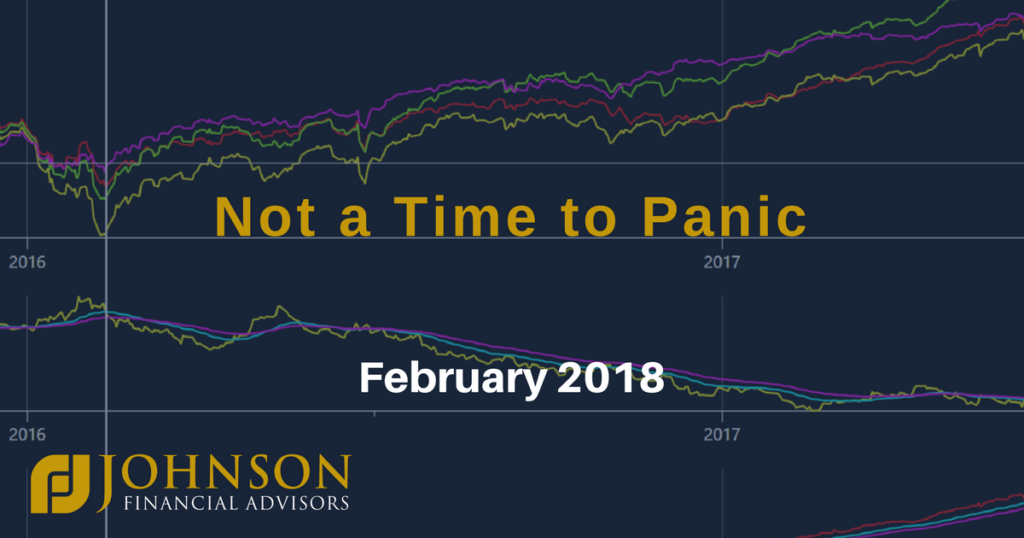
Not a Time to Panic
It appears the stock market is experiencing a long-anticipated correction. In last month’s newsletter we noted, “…we can’t help but search the horizon for a cloud or two. We know a correction would be healthy for the overall market.”
What is a correction?
Corrections are price declines of 10% or more that stop an upward trend. Corrections are normal, usually short-term, and help to flush excesses out of the market. In fact, 80% of stock market corrections are a brief blip on the uptrend of a bull market. This happened when the S&P 5001 dropped 11% in January 2016, then quickly reversed and headed for new highs.
The steady uptrend during the past two years has been unusual in that there were no corrections. Some investors have been impatiently waiting for the market to “go on sale” so that they could invest new money. These investors know that such opportunities are temporary, just like when your favorite products go on sale at the grocery store. Warren Buffet explains it this way, “Smile when you read a headline that says, ‘Investors lose as market falls.’ There is a buyer for every seller and what hurts one helps the other.”2
Do corrections mean the beginning of a bear market?
Corrections are not the same as a bear market, which is a downturn of 20% or more over at least a two-month period. Bear markets are characterized by widespread pessimism across multiple market indexes. The most recent bear market was from October 2007 to March 2009.
We do not believe this is the beginning of a new bear market. There is a strong amount of stimulus in the US economy right now and conditions are favorable for growth in almost all sectors. The market may be worried that growth will lead to inflation, but once again we need to keep our perspective. Even if inflation ticks up, we are still in a favorable range. And even if the Fed raises interest rates, we are still just above historic lows.
Take a deep breath
The media has all but ignored the tremendous performance of the U.S. stock market during the past two years, but they will make a lot of noise over this correction. It is important to understand the math, especially when reporters compare recent market drops with the past. For example, when the DOW index3 dropped 508 points on October 19, 1987, that was a 22% drop in one day! When the DOW index dropped 1,200 points on Monday (2/5/2018) it represented only a 4.6% drop. Why? Because the DOW index was at 2,246 in 1987. Now it is at more than ten-fold that amount. As an investor, you must keep things in perspective. This is a rain shower—the sky is not falling.
We invite you to call us to discuss your portfolio. Because of the strong performance of equities, maybe some rebalancing is in order. Or if you want to adjust your risk, we can make adjustments. As always, we look forward to hearing from you.
